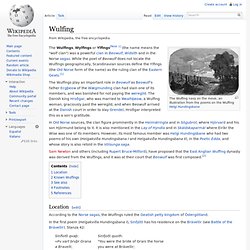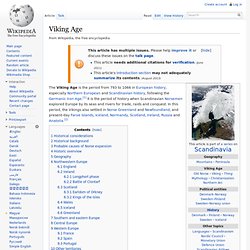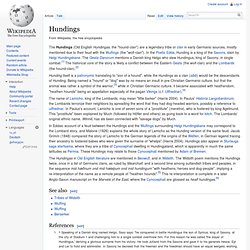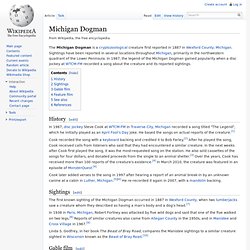

Ceasg. Fraxinus. European Ash in flower Narrow-leafed Ash (Fraxinus angustifolia) shoot with leaves Selected species[edit] Eastern North America Western and southwestern North America Fraxinus anomala Torr. ex S.Watson – Singleleaf AshFraxinus berlandieriana DC. – Mexican AshFraxinus cuspidata Torr. – Fragrant AshFraxinus dipetala Hook.

& Arn. – California Ash or Two-petal AshFraxinus dubiaFraxinus gooddingii – Goodding's AshFraxinus greggii A.Gray – Gregg's AshFraxinus latifolia Benth. – Oregon AshFraxinus lowellii – Lowell AshFraxinus papillosa Lingelsh. – Chihuahua AshFraxinus purpusiiFraxinus rufescensFraxinus texensis (A.Gray) Sarg. – Texas AshFraxinus uhdei (Wenz.) Western Palearctic (Europe, north Africa and southwest Asia) Eastern Palearctic (central and east Asia) Closeup of European Ash seedsUnusual "treelets" growing from a fallen ash tree in Lawthorn wood, Ayrshire, Scotland Ecology[edit] Threats[edit] Canker on an Ash tree in North Ayrshire, Scotland Emerald ash borer. Brian (mythology) In Goidelic mythology, and especially in Scotland, Brian was a pompous man who helped Cailleach rescue Deò-ghrèine.

He was a son of Tuireann, and brother to Iuchar and Iucharba (these have many variant spellings). "Brian Seizes the Pig-Skin", illustration by J.H. Bacon, c.1905. Wulfing. The Wulfing navy on the move, an illustration from the poems on the Wulfing Helgi Hundingsbane The Wulfings, Wylfings or Ylfings[Note 1] (the name means the "wolf clan") was a powerful clan in Beowulf, Widsith and in the Norse sagas.

While the poet of Beowulf does not locate the Wulfings geographically, Scandinavian sources define the Ylfings (the Old Norse form of the name) as the ruling clan of the Eastern Geats.[1] In Old Norse sources, the clan figure prominently in the Heimskringla and in Sögubrot, where Hjörvard and his son Hjörmund belong to it. Odin. Major god in Norse mythology Odin (;[1] from Old Norse: Óðinn, IPA: [ˈoːðinː]) is a widely revered god in Germanic mythology.

Viking Age. The Viking Age is the period from 793 to 1066 in European history, especially Northern European and Scandinavian history, following the Germanic Iron Age.

It is the period of history when Scandinavian Norsemen explored Europe by its seas and rivers for trade, raids and conquest. Harald Fairhair. Harald Fairhair (Old Norse: Haraldr hárfagri, Norwegian: Harald Hårfagre; c. 850 – c. 932) was remembered by medieval historians as the first King of Norway.

According to traditions current in Norway and Iceland in the twelfth and thirteenth centuries, he reigned from c. 872 to 930. Most of his life remains uncertain, since the extant accounts of his life in the sagas were set down in writing around three centuries after his lifetime. A few remnants of skaldic praise poems attributed to contemporary court poets exist which seem to refer to Haraldr's victories against opponents in Norway. The information supplies in these poems is inconsistent with the tales in the sagas in which they are transmitted, and the sagas themselves often disagree on the details of his background and biography.[1] Two of his sons, Eric Bloodaxe and Haakon the Good, succeeded Harald to become kings after his death.
Werewolf witch trials. The Werewolf witch trials were witch trials combined with werewolf trials.

Belief in werewolves developed parallel to the belief in witches, in the course of the Late Middle Ages and the Early Modern period. Like the witchcraft trials as a whole, the trial of supposed werewolves emerges in what is now Switzerland (especially the Valais and Vaud) in the early 15th century and spreads throughout Europe in the 16th, peaking in the 17th and subsiding by the 18th century. Hundings. The Hundings (Old English Hundingas, the "hound-clan") are a legendary tribe or clan in early Germanic sources, mostly mentioned due to their feud with the Wulfings (the "wolf-clan").

In the Poetic Edda, Hunding is a king of the Saxons, slain by Helgi Hundingsbane. The Gesta Danorum mentions a Danish king Helgo who slew Hundingus, king of Saxony, in single combat.[1] The historical core of the story is likely a conflict between the Eastern Geats (the wolf-clan) and the Lombards (the hound-clan).[2] Hunding itself is a patronymic translating to "son of a hound", while the Hundings as a clan (sibb) would be the descendants of Hunding. Being named a "hound" or "dog" was by no means an insult in pre-Christian Germanic culture, but that the animal was rather a symbol of the warrior,[3] while in Christian Germanic culture, it became associated with heathendom, "heathen hounds" being an appellation especially of the pagan Vikings (c.f.
Ulfhednar).[4] Michigan Dogman. The Michigan Dogman is a cryptozoological creature first reported in 1887 in Wexford County, Michigan.

Sightings have been reported in several locations throughout Michigan, primarily in the northwestern quadrant of the Lower Peninsula. In 1987, the legend of the Michigan Dogman gained popularity when a disc jockey at WTCM-FM recorded a song about the creature and its reported sightings. Soul. Linguistic aspects[edit]

Birch. Birch is a broadleaved deciduous hardwood tree of the genus Betula (/ˈbɛtjʊlə/),[1] in the family Betulaceae, which also includes alders, hazels, and hornbeams, and is closely related to the beech/oak family, Fagaceae. The genus Betula contains 30 to 60 known taxa of which 11 are on the IUCN 2011 Red List of Threatened Species. They are typically rather short-lived pioneer species widespread in the Northern Hemisphere, particularly in northern temperate and boreal climates.
This tree is sometimes called "The Watchful Tree" because of eye-like impressions on the bark. Domhnall Dubh. Domhnall Dubh (died 1545) was a Scottish nobleman. He was the son of Aonghas Óg, chief of Clan Donald (Clann Domhnaill), and claimant to the Lordship of the Isles, which had been held by his grandfather John of Islay, Earl of Ross (Eoin MacDomhnaill).
While just an infant, Domhnall Dubh was captured by Cailean I, Earl of Argyll.and imprisoned in Innischonnel Castle in Loch Awe. He remained in captivity for most of his life. He died at Drogheda, Ireland, in 1545. Early life[edit] Psychosis. Psychosis (from the Greek ψυχή psyche, "mind/soul", and -ωσις -osis, "abnormal condition or derangement") refers to an abnormal condition of the mind, and is a generic psychiatric term for a mental state often described as involving a "loss of contact with reality". People suffering from psychosis are described as psychotic. Psychosis (as a sign of a psychiatric disorder) is a diagnosis of exclusion. Signs and symptoms[edit] People with psychosis may have one or more of the following: hallucinations, delusions, catatonia, or a thought disorder, as described below. Impairments in social cognition also occur.[3][4]
Rabies. Rabies (/ˈreɪbiːz/; from Latin: rabies, "madness") is a viral disease that causes acute inflammation of the brain in humans and other warm-blooded animals.[1] The time period between contracting the disease and the start of symptoms is usually one to three months; however it can vary from less than one week to more than one year.[1] The time is dependent on the distance the virus must travel to reach the central nervous system.[2] Early symptoms may include fever and tingling at the site of exposure.[1] This is then followed by either violent movements, uncontrolled excitement, and fear of water or an inability to move parts of the body and confusion followed by loss of consciousness.[1] In both cases once symptoms appear it nearly always results in death.[1] Signs and symptoms[edit] Person with rabies, 1959 The period between infection and the first flu-like symptoms is typically 2 to 12 weeks.
Wolf attacks on humans. Although wolf attacks on humans do occur, their frequency varies with geographical location and historical period. Wolf attacks are dangerous not only for the victims, but also the attackers, who are often subsequently killed, or even extirpated in reaction. As a result, wolves today tend to live mostly far from people or have developed the tendency and ability to avoid them. The country with the most extensive historical records is France, where nearly 7,600 fatal attacks were documented in from 1200–1920.[1] In modern times, they occur most often in India and neighboring countries.
There are few historical records or modern cases of wolf attacks in North America. Gibside. Untouchables (law enforcement) Lizzie Borden. South Slavs. Oak. An oak is a tree or shrub in the genus Quercus (/ˈkwɜːrkəs/;[1] Latin "oak tree") of the beech family, Fagaceae. There are approximately 600 extant species of oaks. Zeus. Werecat. A werecat (also written in a hyphenated form as were-cat) is a name coined in 1970s pop culture in analogy to "werewolf" for a feline therianthropic creature. Depending on the story in question, the species involved can be a domestic cat,[1] a tiger,[2] a lion,[3] a leopard,[4] a lynx, or any other type, including some that are purely mythical felines.[5]
Peter Stumpp. Lord of the Isles. Thomas Lyon-Bowes, 12th Earl of Strathmore and Kinghorne. Glamis Castle. Claude Bowes-Lyon, 13th Earl of Strathmore and Kinghorne. Pixie. Yggdrasil. Picts. Norse mythology. Giant (mythology) Nuckelavee. Meliae. Aconitum. Therianthropy. Lilian Bowes Lyon. Caoineag. Wirry-cow. Cirein-cròin. Baleen whale. Dunnie. Gigelorum. Changeling. Deò-ghrèine. Clan Mackintosh. Banshee.
Pearlin Jean. Glaistig. Goídel Glas. Loch Ness Monster. Pictish Beast. Baron Bowes. Hebridean mythology and folklore. Cirein-cròin. Boobrie. Wirry-cow. Elm. Ericaceae. Uathach. The Goodman's Croft. Buxus sempervirens. Bearberry. Vaccinium vitis-idaea. Monster of Glamis. Dantalion. Demonology. Queen Victoria. Prince Leopold, Duke of Albany. Charlotte Lyon-Bowes, Lady Glamis. Dowager. Moirai. Camus (folklore) Camus (folklore) Pech (mythology) Bauchan. Magic (paranormal) Killer whale. Seonaidh. Shellycoat. Selkie. Rose. Crom Dubh. Beowulf. Poetic Edda.